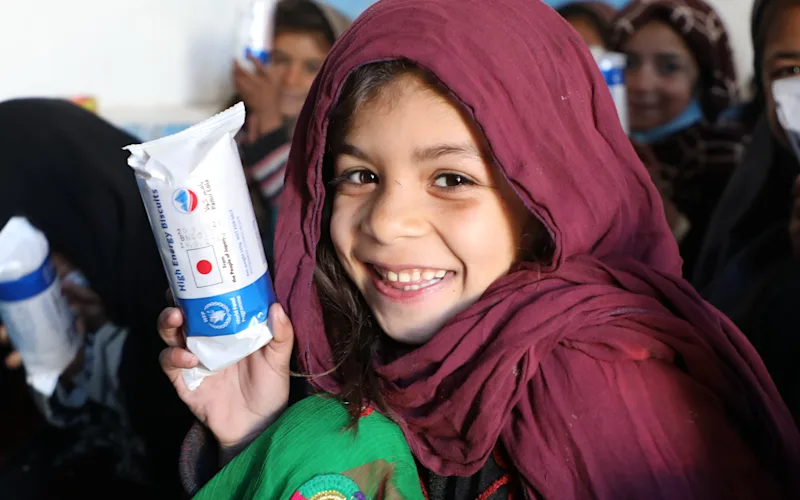

What’s inside a typical WFP food basket
Rice or flour
A staple item in many countries and vital source of daily energy.
Vegetable oil
Rich in essential fats and vitamins, supporting a healthy immune system.
Lentils or beans
Plant-based protein and fibre, helping maintain a healthy heart and gut.
Salt
Supports a healthy pregnancy and helps child development.
The food basket is based on local food preferences and diets wherever possible so the items could vary.
Recent earthquakes in the east crippled communities struggling to eat and survive. Food assistance can be a lifeline for millions as the harsh winter months approach.
Overview
Shared meals will help provide emergency humanitarian assistance to families in Afghanistan including school meals, cash and nutrition.
Afghanistan is experiencing a rapidly worsening humanitarian crisis, with more than 9 million people—one in every four—experiencing acute food insecurity. 2025 saw the sharpest surge in malnutrition ever recorded, with over 4.7 million women and children in urgent need of treatment. Years of conflict, severe drought across 19 provinces, multiple earthquakes, and an economic crisis have left families struggling to survive. The World Food Programme (WFP) provides life-saving assistance wherever possible, including food, fortified biscuits, nutritious school snacks, and livelihood support, such as skills training and backyard gardening. Following recent earthquakes, WFP was the first international agency on the ground, setting up storage tents, activating helicopter support, and operating flights through the UN Humanitarian Air Service to reach the most severely affected and remote areas.
Location
Afghanistan